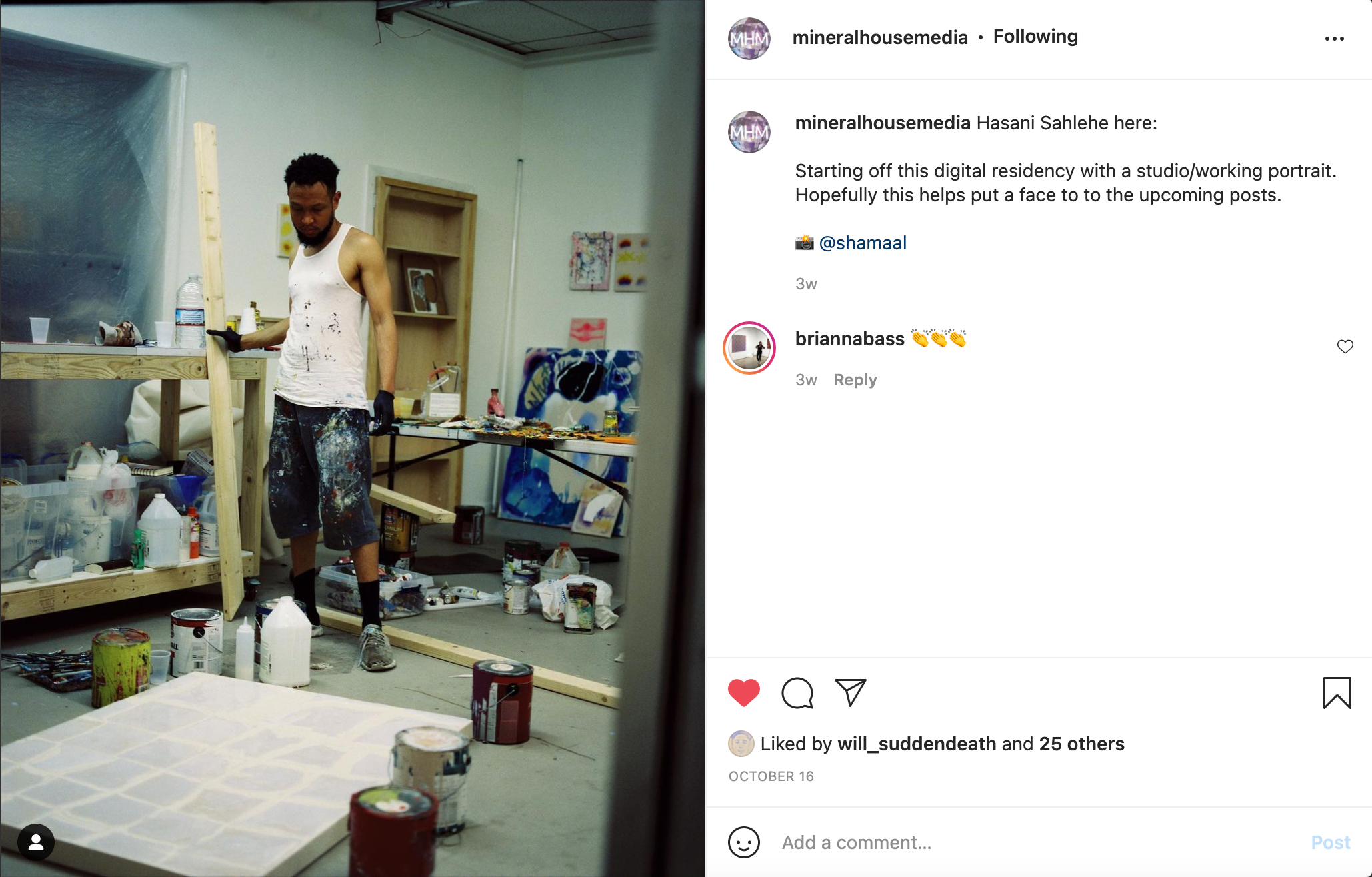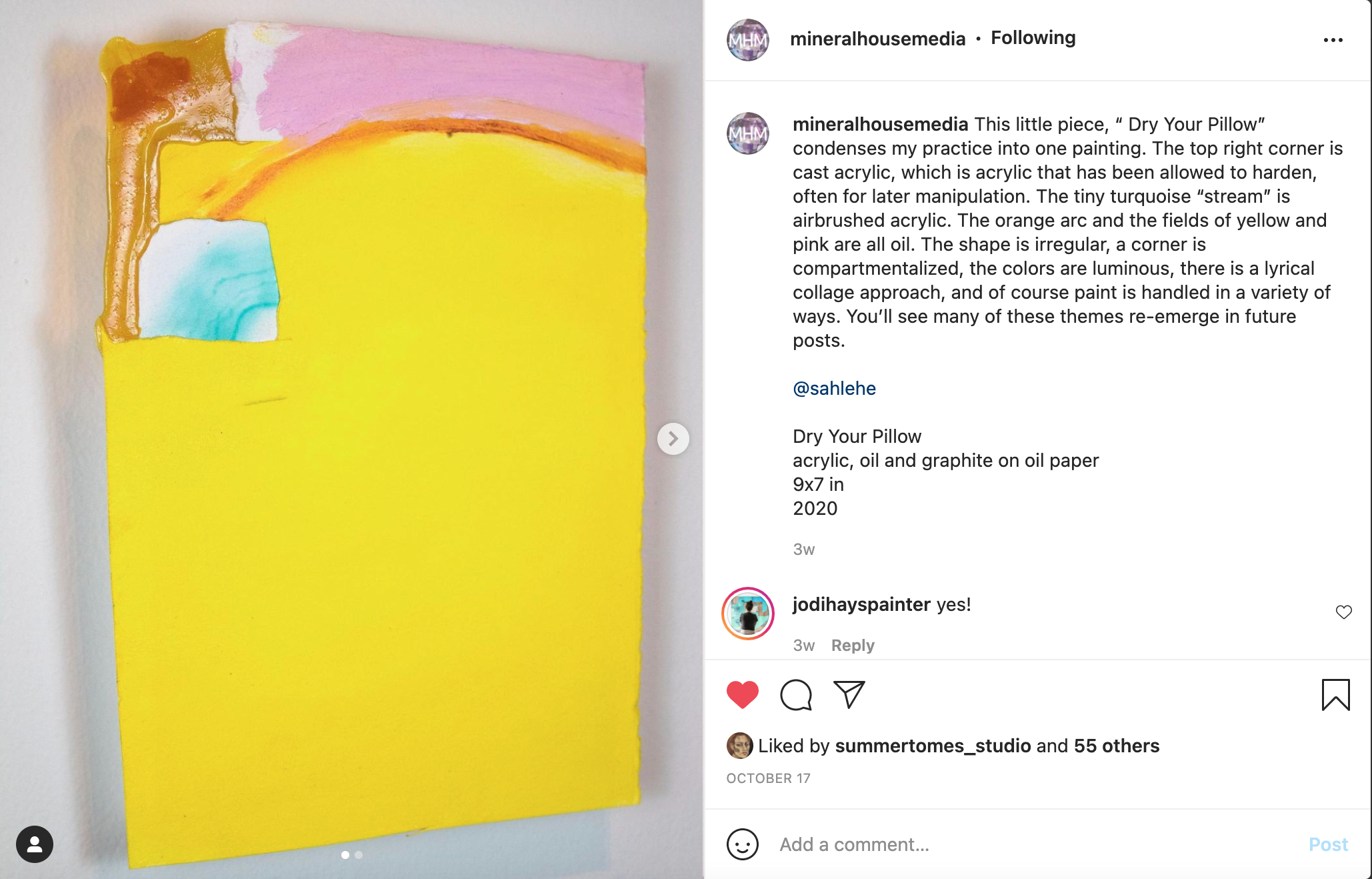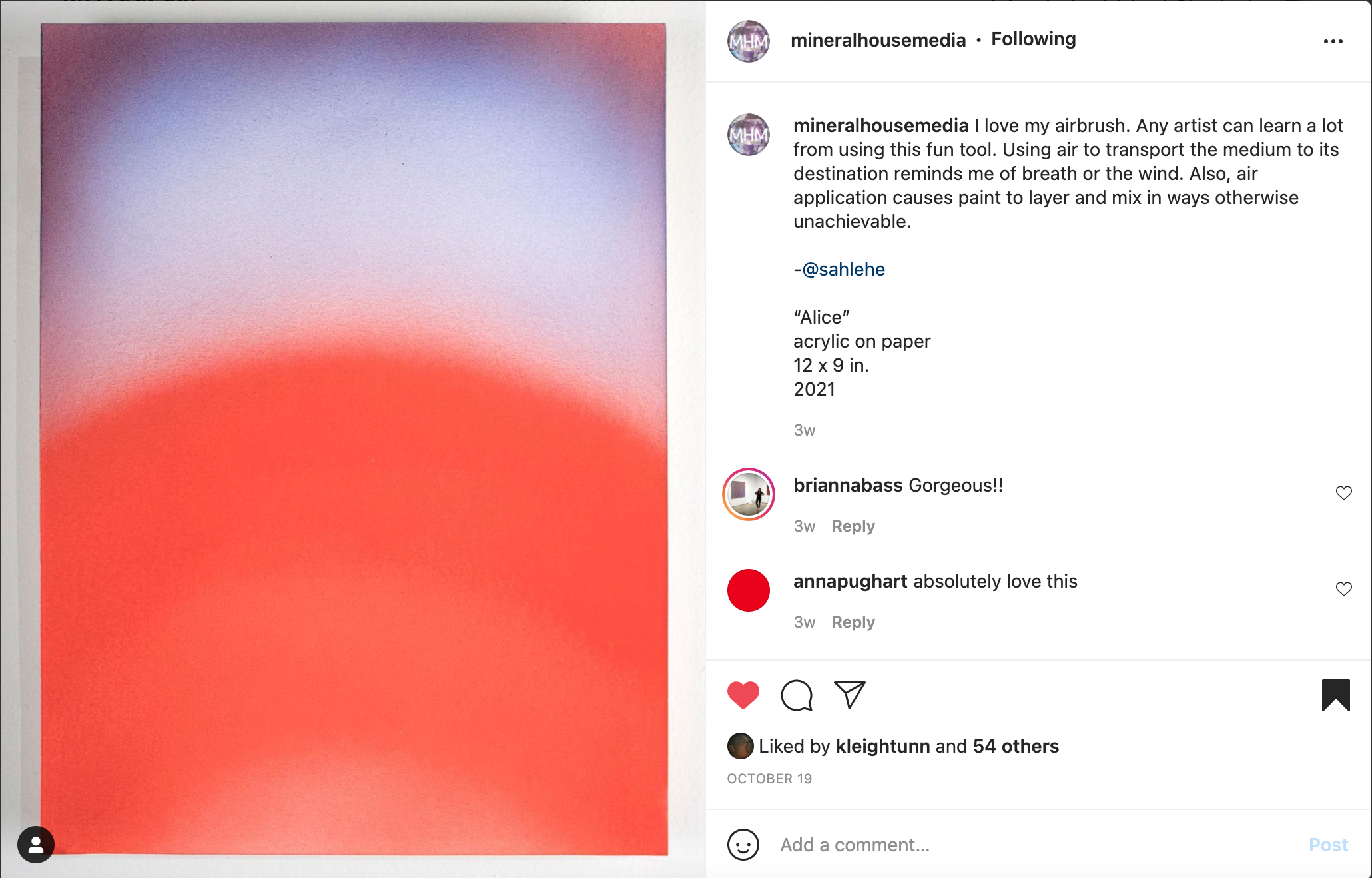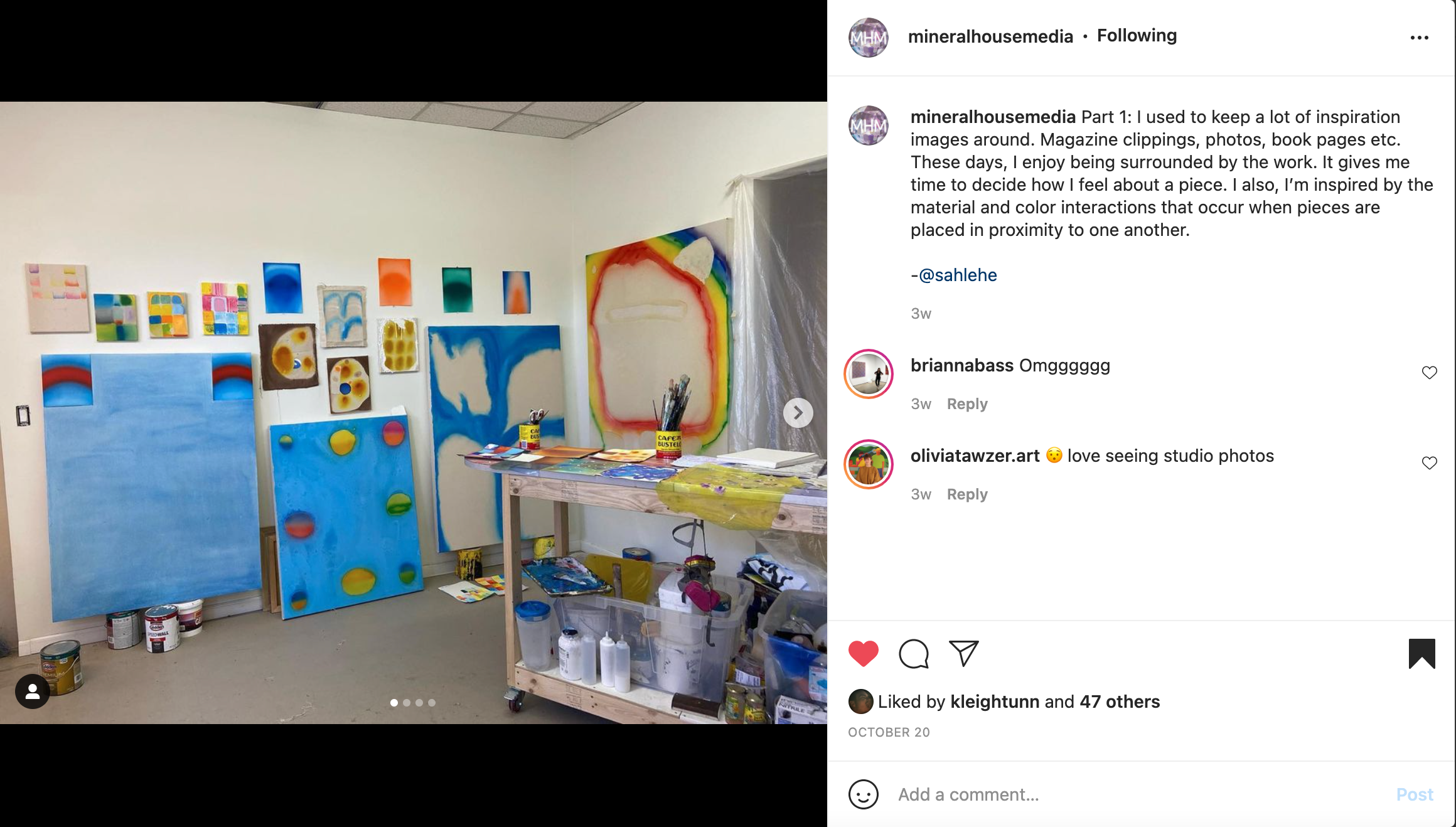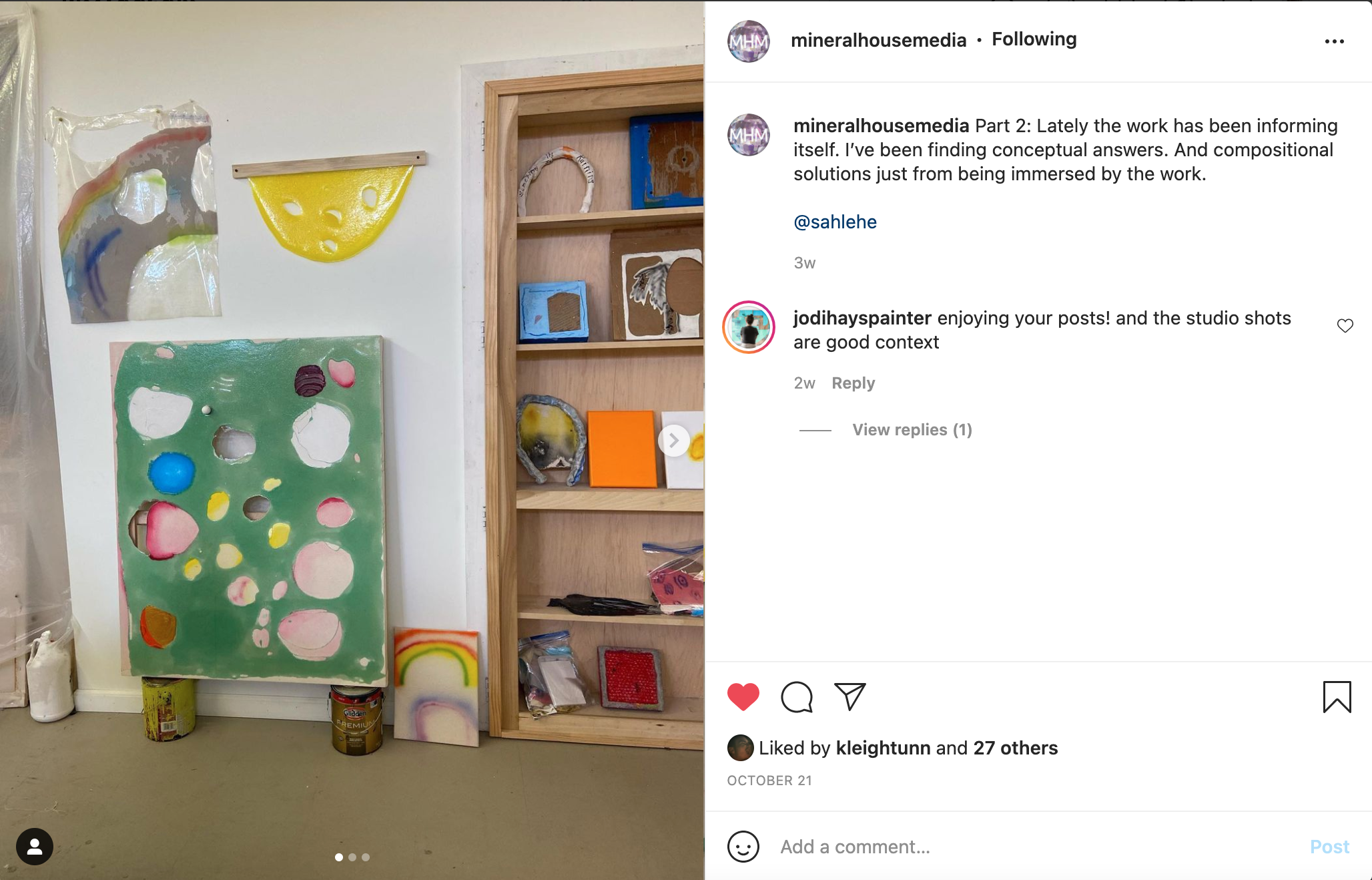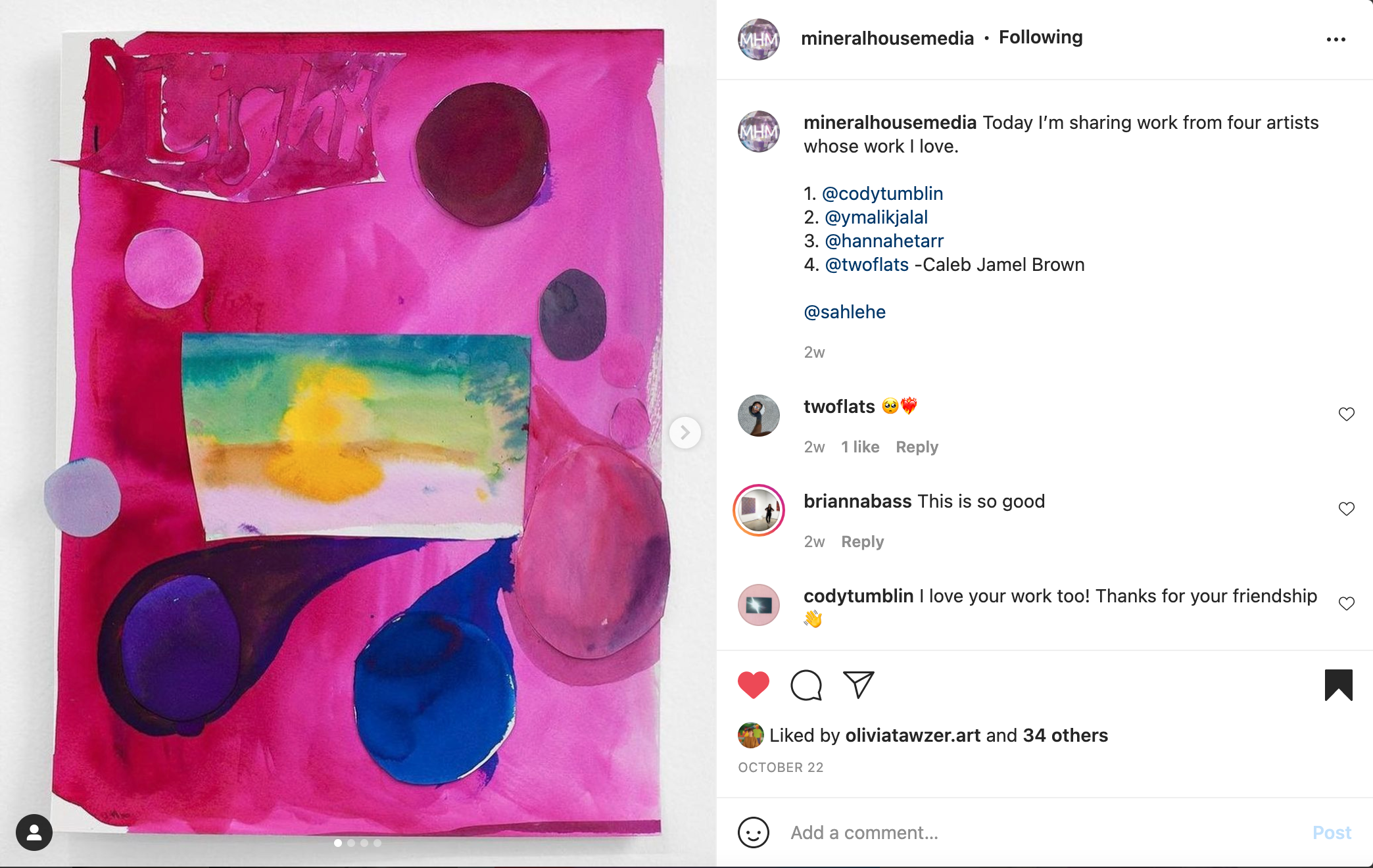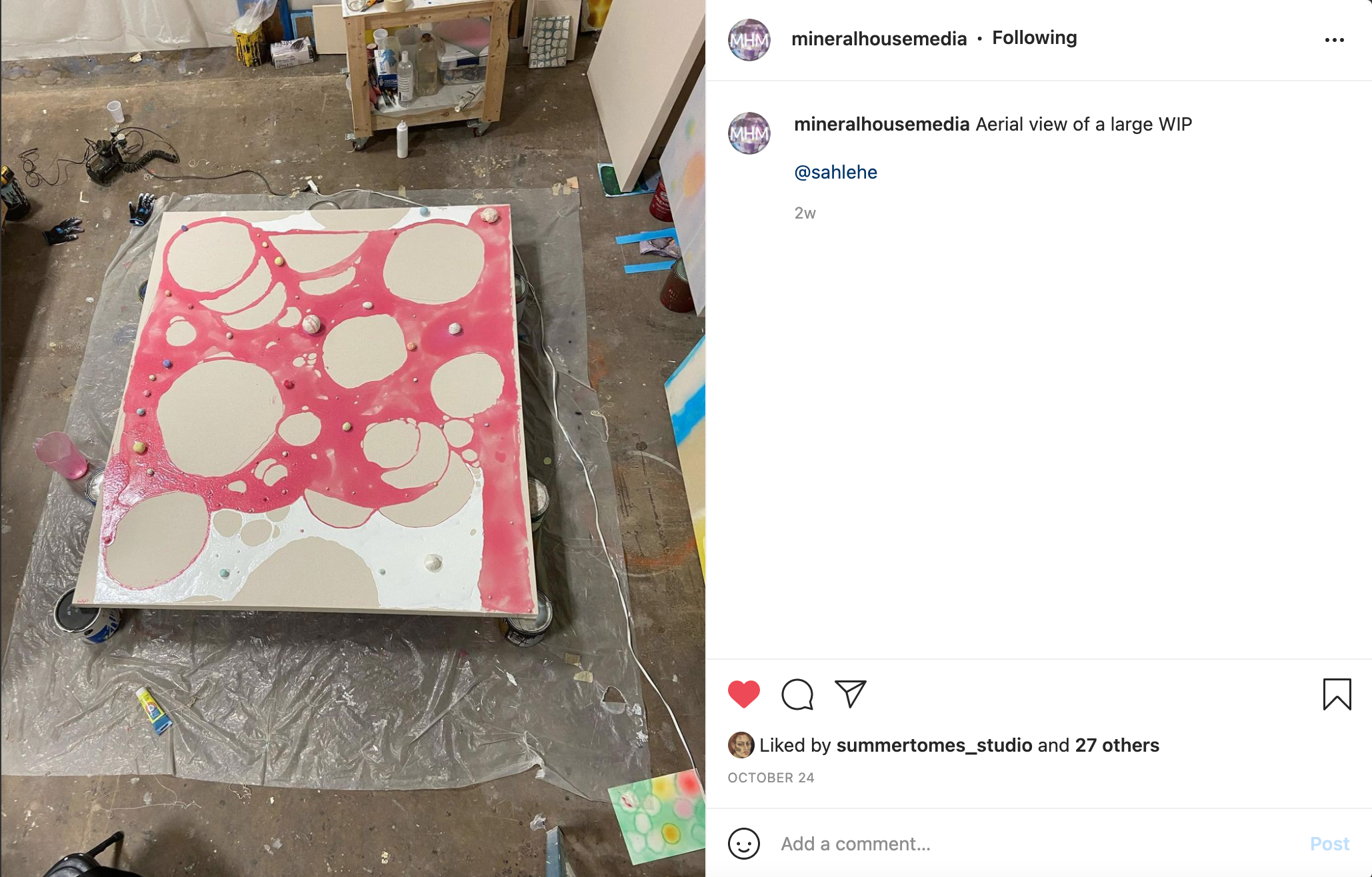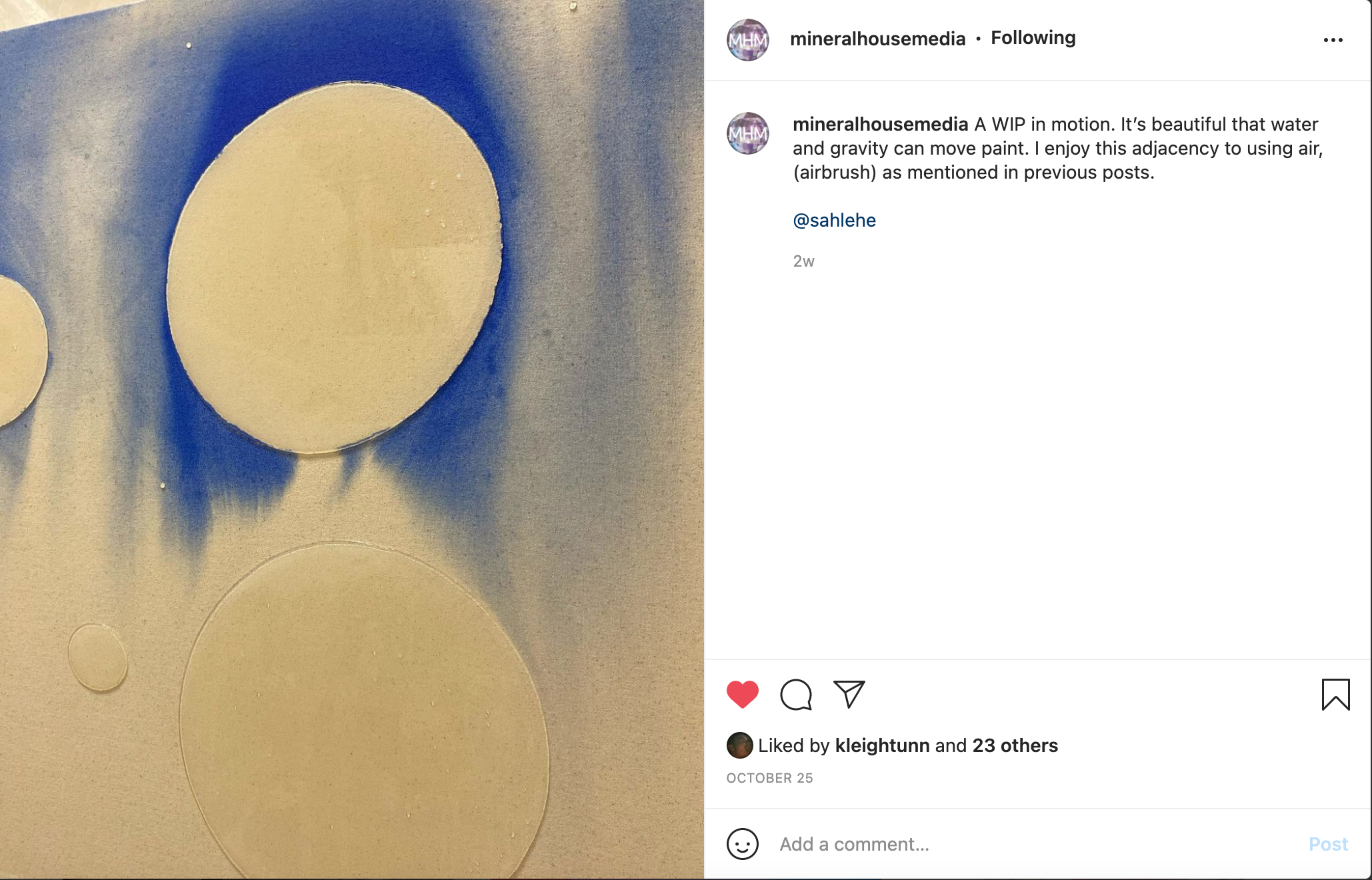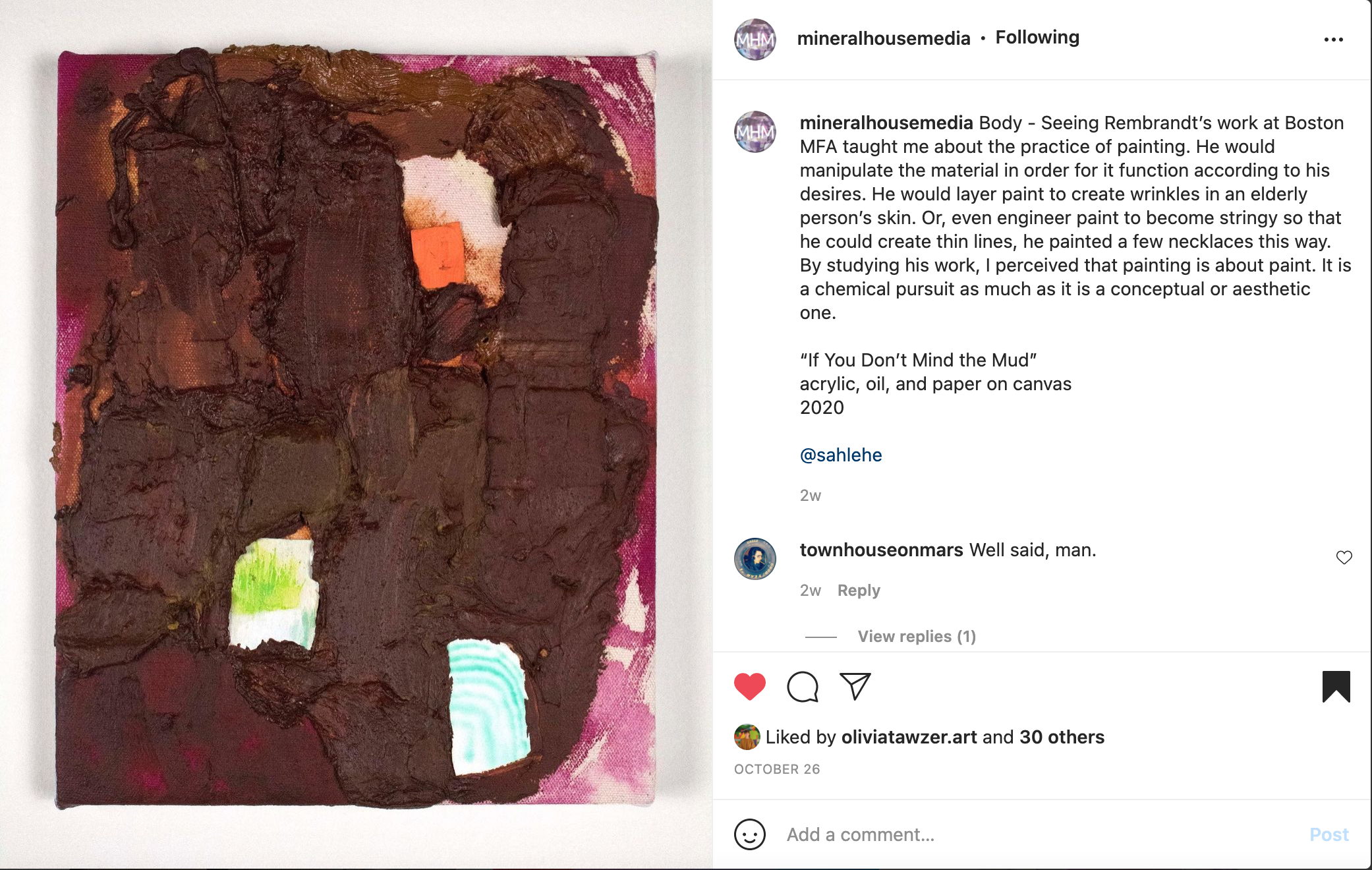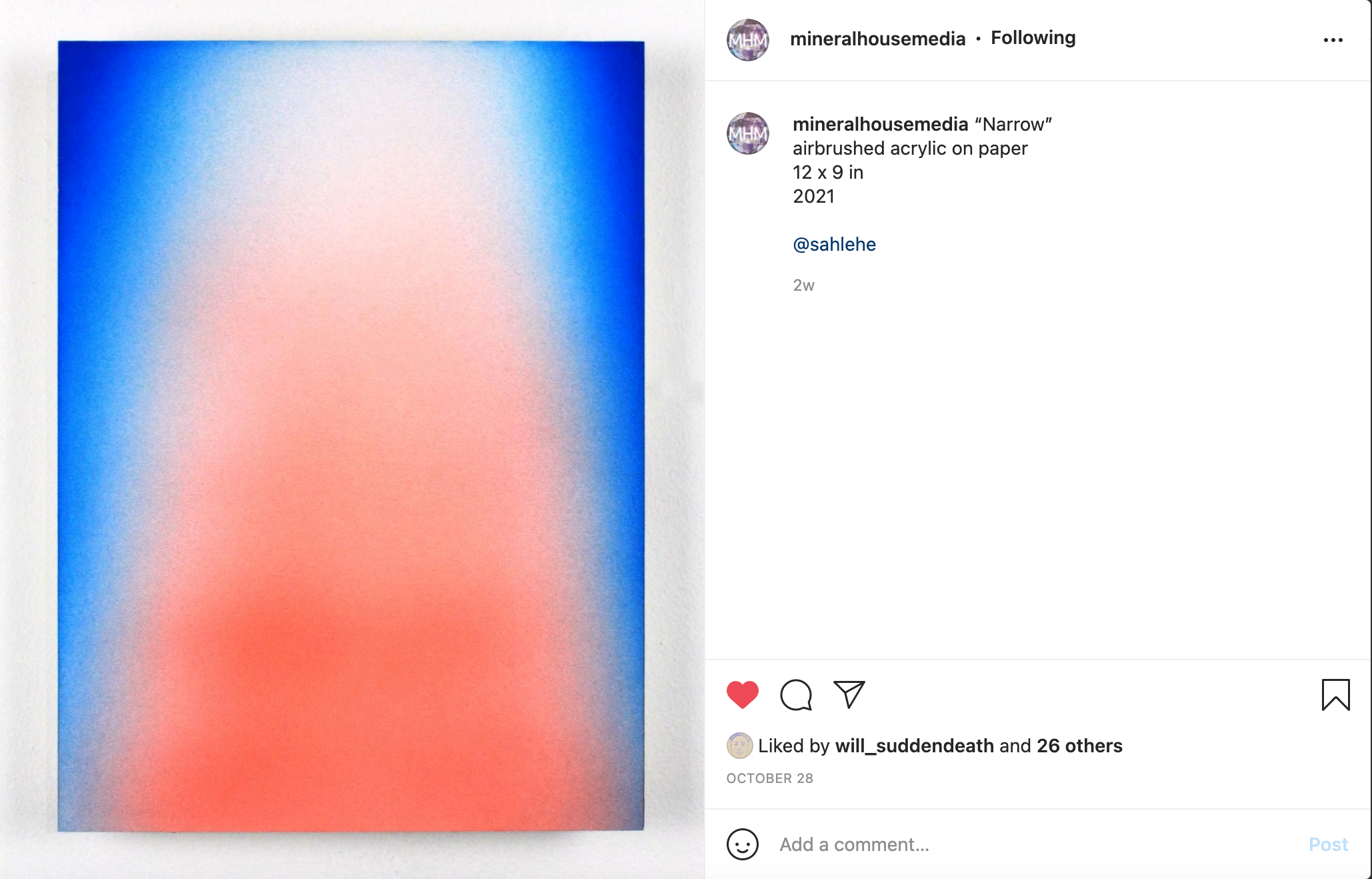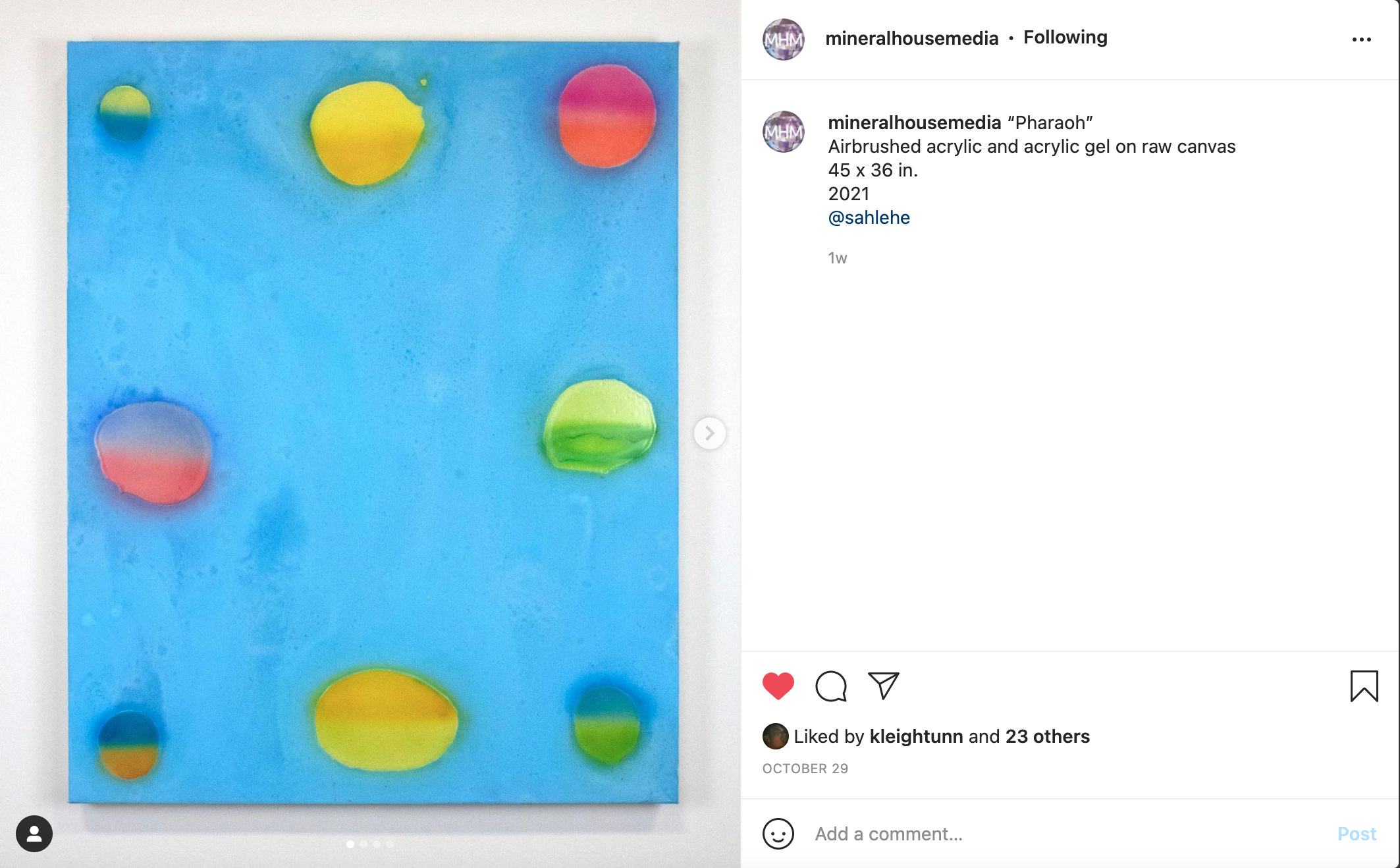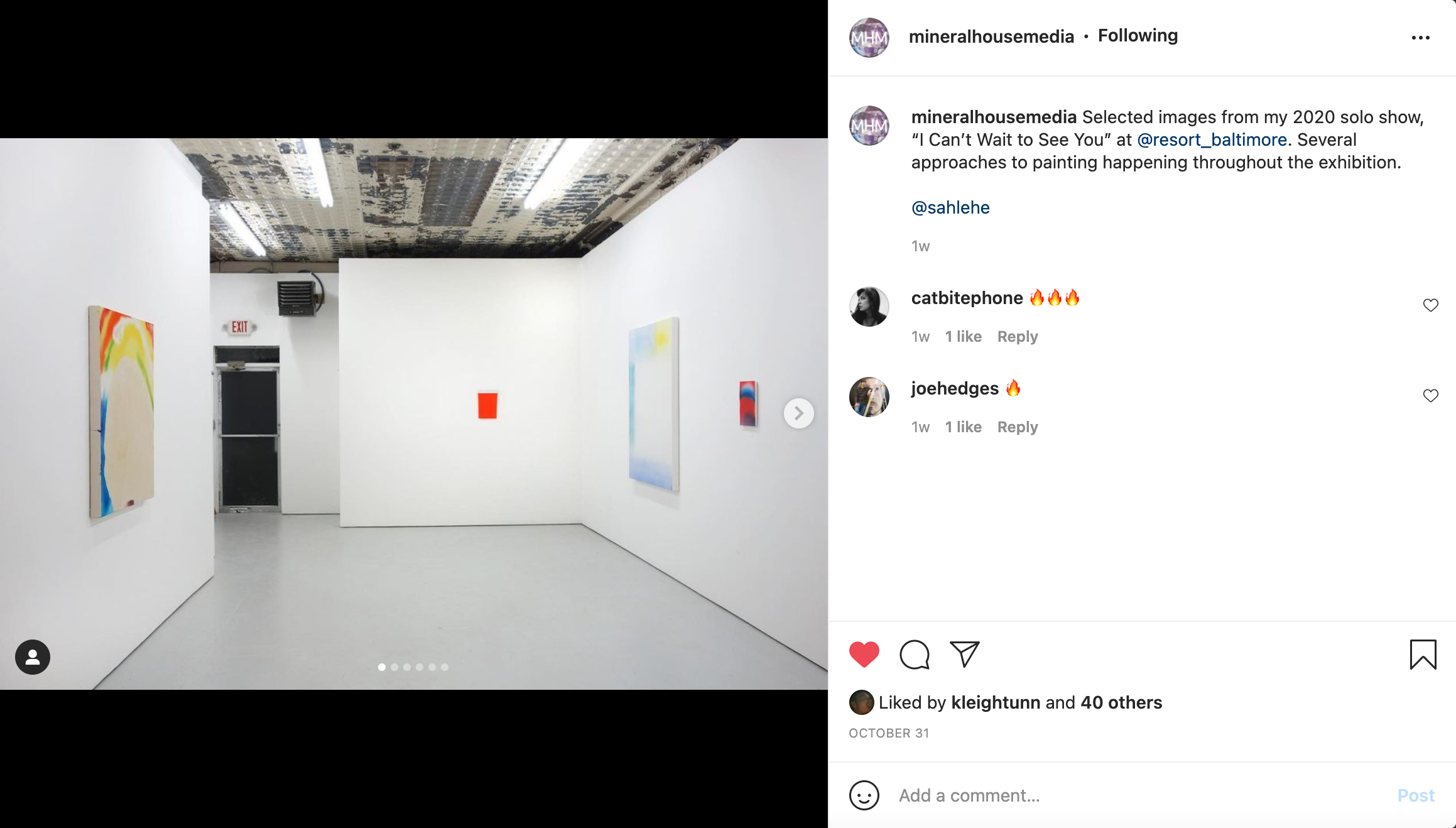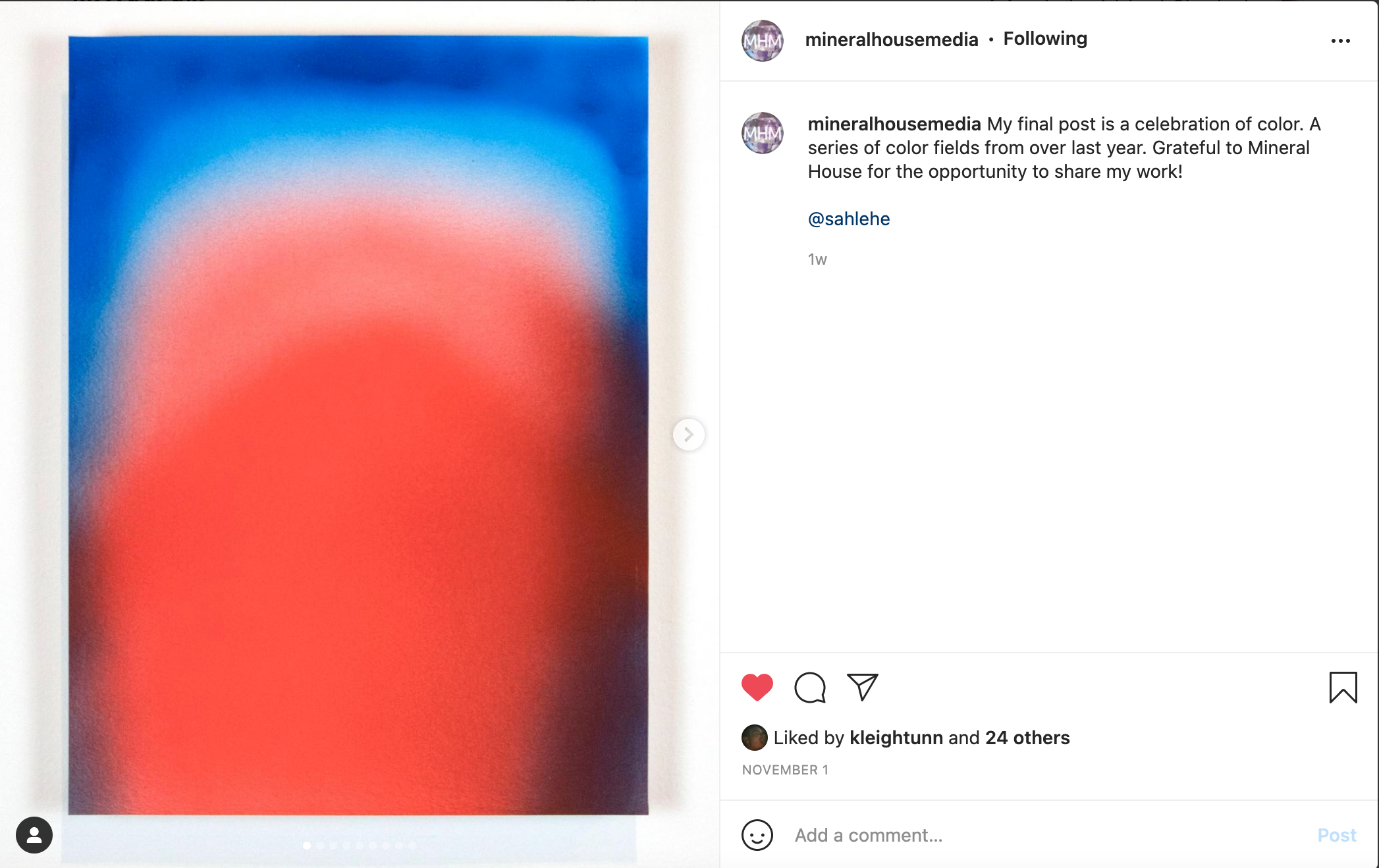Interview with Hasani Sahlehe
Interview with
Hasani Sahlehe
October 2021 Digital Resident
A conversation with Victoria Sauer of Mineral House Media
“We embraced, we laughed, we ate. Your body no longer exists. I often wonder where you are. Have you found paradise? Are you amongst the clouds? Are you with the ghosts that my Great-Grandmother used to tell me about?
They say that humans exist in body, spirit, and mind. Perhaps your little notes still contain your consciousness. Maybe, whenever I quote you, you breathe again. How much of you did I capture in that portrait from many years ago?
You are not that painting. But like you, paint functions in multiple states. The material can be cast, poured, stained, or even airbrushed. The medium’s sundry properties reveal parallels between person and paint.
The simple suns and rainbows that I render ponder the mysteries of this physical world, a callback to the indigenous art of long ago. These vibrant motifs borrow the power of light. Their emphasis on the body of paint reminds me of your body. They echo the melodies sung by Stanley Whitney, Sam Gilliam, and Suzanne Jackson.”
-Hasani Sahlehe
Mineral House Media: Can you tell us a bit more about the relationship between your work and your writing? You work abstractly, but speak about it so figuratively, even alluding to portraiture. What is it like to embody a person or multiple persons with nonobjective compositions?
Hasani Sahlehe: I’m interested in the intangible aspects of humanity. For example, I have loved ones who have passed away so long ago that I vaguely remember how they look. I’ve forgotten our conversations and much of the times we shared. But, I remember how they made me feel, and that’s what I try to paint.
MHM: I’d love to hear more about your thoughts on the infinity of paint as a material, following the societal idea that people, places, and things are not confined to just one way of being.
HS: Innovations will allow us to paint in new ways. There will be new applicators and new types of paint. Present examples would be Naton Lawson using CNC to paint, or Suzanne Jackson suspending dried acrylic. Before the mid-20th century, it's unlikely that artists were considering either of these approaches. Humanity will change as it interfaces with technology, causing our language for painting to develop with it.
MHM: How did you become introduced to the airbrush tool?
HS: I worked at Smooth Kreationz design studio after I graduated high school in the Virgin Islands. The other guys in the shop would customize cars. I was enamored watching them apply color to surfaces by using air.
MHM: You seem to work with a range of surface sizes--do you have a preference between small and large? Do they serve different purposes for you?
HS: I have no preference. I use scale to engage the viewer’s awareness of themselves or the surrounding space.
MHM: When working on the floor, what benefits or enrichment does that offer your creative practice that working on a wall or easel lacks?
HS: I'm using orientation to control the paint. Most times, I work on the floor to avoid drips.
MHM: What do you think about the idea of painting being so adjacent to sculpture? By manipulating paint, layering it, working with it as a material and as a “chemical pursuit” as you put it, it seems like painting can often feel like sculpting atop of canvas.
HS: I think painting is about paint. When paintings are sculptural, they’re just demonstrating that aspect of the material.
MHM: What brands of paint do you prefer to work with?
HS: I like Golden, Williamsburg, Sennelier, and Winsor Newton
MHM: It’s so inspiring to see the work informing the work, being surrounded by it in your studio. What sort of inspo were you looking at in the beginning? Any books, TV shows, movies, magazines, etc. that ignited a certain spark?
HS: At first, I was looking at a bunch of abstraction, sculpture, and collage. Then I started listening to a lot of jazz, southern-gospel, electronic, and soul. From there, ideas began to take shape. Quentin Tarrantino says he finds the soundtrack before he writes the script.
MHM: I really appreciate being introduced to other artists whose work inspires you. What advice do you have for maintaining artist camaraderie outside of an academic setting? How do you stay connected to others?
HS: You can stay connected by attending shows or passing on opportunities. Showing support is always a good way to stay connected. I also suggest setting intentional ways of interacting with other artists like studio visits or mentorship/menteeship.
MHM: What is the best way to stay in touch with you and your work as it continues to develop?
HS: website: www.hasanisahlehe.com
instagram: @sahlehe
Mailing List: https://mailchi.mp/8800d769efc6/friends
Hasani Sahlehe grew up in a four-generation home on St. Thomas, the 32 square mile capital of the Virgin Islands. Sahlehe's paintings synthesize the relationship between the body and paint. His paintings incorporate a luminous palette and reference heterogeneous philosophies related to life and death. Sahlehe's work has been shown at SCAD Museum of Art, NADA Miami, and the Atlanta Contemporary. Art Papers, New American Paintings, Art Maze, and Burnaway have published his work. Sahlehe received his BFA in Painting from the Savannah College of Art and Design in 2015. He currently serves as a teaching artist at the High Museum of Art in Atlanta, GA.
